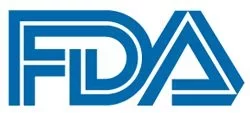Article
FDA Approves Loncastuximab Tesirine for Relapsed/Refractory Large B-Cell Lymphoma
Author(s):
The FDA has granted an accelerated approval to loncastuximab tesirine (Zynlonta) for the treatment of adult patients with relapsed/refractory large B-cell lymphoma following 2 or more lines of systemic therapy, including diffuse large B-cell lymphoma (DLBCL) not otherwise specified, DLBCL arising from low-grade lymphoma, and high-grade B-cell lymphoma.
FDA

The FDA has granted an accelerated approval to loncastuximab tesirine (Zynlonta) for the treatment of adult patients with relapsed/refractory large B-cell lymphoma following 2 or more lines of systemic therapy, including diffuse large B-cell lymphoma (DLBCL) not otherwise specified, DLBCL arising from low-grade lymphoma, and high-grade B-cell lymphoma.
The approval for loncastuximab tesirine is based on findings from the pivotal phase 2 LOTIS-2 study, in which the CD19-directed antibody and alkylating agent conjugate elicted a 48.3% objective response rate (ORR), which included a 24.1% complete response (CR) rate in patients with relapsed/refractory disease who had received 2 or more previous lines of systemic treatment.2
“There is a significant unmet need for treatment options for patients with [relapsed/refractory] DLBCL, including those who have been heavily pretreated and have difficult-to-treat disease,” said Paolo F. Caimi, MD, University Hospitals Cleveland Medical Center and Case Comprehensive Cancer Center, Case Western Reserve University. “Single-agent Zynlonta demonstrated clinically important outcomes in the pivotal LOTIS-2 study across several disease subtypes. Notably, this included transplant eligible and ineligible patients and patients who previously received stem cell transplant or CAR-T cell therapy.”
In the multicenter, open-label, single arm phase 2 LOTIS-2 study, investigators evaluated the safety and efficacy of loncastuximab tesirine in patients with relapsed/refractory DLBCL who had received 2 or more previous lines of systemic treatment; all patients received a median of 3 lines of prior therapy.
Loncastuximab tesirine was administered as a 30-minute infusion at a 150-μg/kg dose once every 3 weeks for the first 2 cycles. In subsequent cycles, the drug was administered at a dose of 75 μg/kg. Treatment was given for 1 year, or until disease progression, unacceptable toxicity, or when other discontinuation criteria were met.
At the April 6, 2020 data cutoff, 145 participants were enrolled to the trial; these patients had received a mean of 4.3 cycles of the ADC (range, 1-15). Additional data revealed during the 2020 European Hematology Association (EHA) Congress showed that loncastuximab tesirine induced an ORR of 37.9% in patients who were refractory to their frontline treatment; this rate was 36.9% in patients who were refractory to their last-line previous treatment. The median duration response achieved with the ADC was 10.25 months.
Regarding safety, loncastuximab tesirine was found to be tolerable and no new safety signals had been observed. The most common grade 3 or higher treatment-emergent adverse effects reported with the ADC in 10% or more patients comprised neutropenia (25.5%) with low incidence of febrile neutropenia (3.4%), thrombocytopenia (17.9%), increased gamma-glutamyl transferase (16.6%), and anemia (10.3%).
Loncastuximab tesirine is also under examination in combination with ibrutinib (Imbruvica) in patients with relapsed/refractory DLBCL or mantle cell lymphoma (MCL). In the phase 1/2 trial, the ADC was administered in 30-minute IV infusions as part of a standard 3+3 dose-escalation trial design. Patients received doses of 60 μg/kg or 90 μg/kg. Loncastuximab tesirine was given every 3 weeks for the first 2 doses, with concurrent fixed-dose oral ibrutinib given at 560 mg/day for up to 1 year.
At the April 6, 2020 data cutoff of, a total of 25 participants had been enrolled to the trial; 23 of these patients had DLBCL, while 2 patients had MCL. Eighteen patients were evaluable for antitumor activity. Interim data from the phase 1 portion of the research, which were also presented during the 2020 EHA Congress, demonstrated that the combination elicited an ORR of 66.7% with a CR rate of 50.0% across the dose levels. Moreover, at the recommended phase 2 dose of 60 μg/kg, the combination induced an ORR of 75.0% with a 58.3% CR rate.
The phase 3 confirmatory LOTIS 5 trial (NCT04384484) is assessing the combination of loncastuximab tesirine and rituximab (Rituxan) vs chemoimmunotherapy in patients with relapsed/refractory DLBCL.3
References
- ADC Therapeutics SA (ADCT) Announces FDA Approval of ZYNLONTA™ (loncastuximab tesirine-lpyl) in Relapsed or Refractory Diffuse Large B-Cell Lymphoma. News release. ADC Therapeutics. April 23, 2021. Accessed April 23, 2021. https://bit.ly/3tI7330
- ADC Therapeutics announces maturing data from pivotal phase 2 clinical trial and phase 1/2 combination clinical trial of loncastuximab tesirine (Lonca) in patients with relapsed or refractory diffuse large B-cell lymphoma. News release. ADC Therapeutics SA. June 12, 2020. Accessed November 20, 2020. https://bwnews.pr/33Q1mnX.
- Study to evaluate loncastuximab tesirine with rituximab versus immunochemotherapy in participants with relapsed or refractory diffuse large B-cell lymphoma. Clinicaltrials.gov. Updated September 17, 2020. Accessed November 20, 2020. https://clinicaltrials.gov/ct2/show/NCT04384484.









